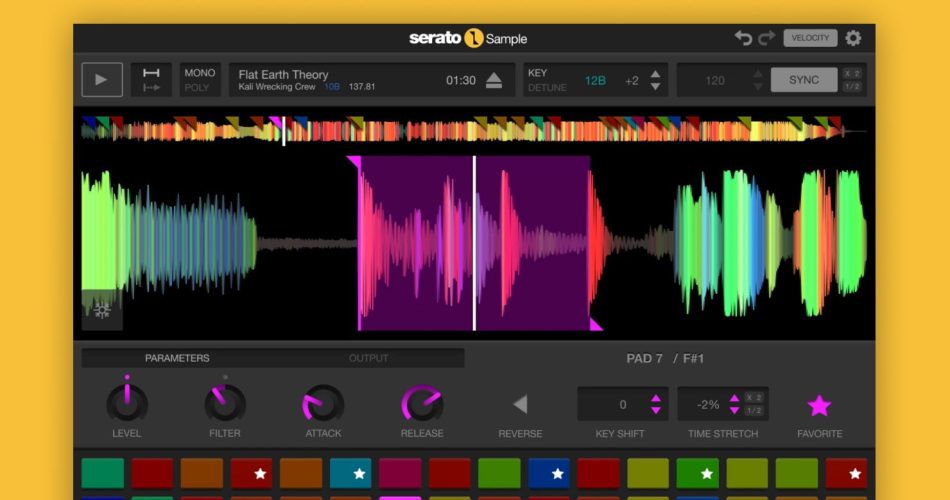

In Key Shift Pad mode, the current pad is copied and pitched across all 16 pads, from -12st to +12st, for melodic play.
#SERATO SAMPLE VST SOFTWARE#
Setting cue points in Sample by hand is easy, but you can let the software populate the 16 pads for you in one of four distinct Autoset modes. There is, however, no way to loop a region - a serious and lamentable omission that we sincerely hope gets addressed in a future update. Playback can be gated (stopping when the triggering key is released) or latched (playing all the way to the end of the region no matter what), and entering Keyboard mode automatically maps the currently selected pad up and down the keyboard - ideal for instant melodics or quickly finding the optimal pitch for a pad. Having set the start of a cue, you can also specify an end point by dragging the bottom handle of the cue marker to the right (or left in Reverse mode).

Map, say, the kick, snare and hi-hats from a drum break to three pads and you have a drum kit slice the notes of a bassline across the requisite number of pads to reconstruct it as you see fit finely chop a vocal into slices for classic house cut-ups.

Rinse and repeat, creating new cues and moving/copying existing ones between pads, to build a bank of up-to-16 pad- triggered sounds - and that, really, is the essence of Sample. Triggering the pad then initiates playback of the cue. Once you’ve found a sound that you like within the source track or clip, zoom and scroll the waveform using the mouse and/or key commands (the mouse wheel is supported, apparently, but our 2016 MacBook Pro’s trackpad didn’t work) to position the playhead at the start of it, then click one of the 16 pads or its assigned QWERTY/MIDI key to place a cue point and map it to that pad. Key detection is good, too, and up to 24 semitones and 50 cents of shift is available in either direction - although there’s no way to rename the suggested key when the algorithm gets it wrong. With the Sync button engaged, playback is locked to host tempo with Sync disengaged, the detected tempo is used as a base, with PnT’s incredibly high-quality timestretching enabling it to be incrementally raised all the way up to 999bpm or down to 1bpm (the latter extreme invariably yielding an awesome drone of some kind).


 0 kommentar(er)
0 kommentar(er)
